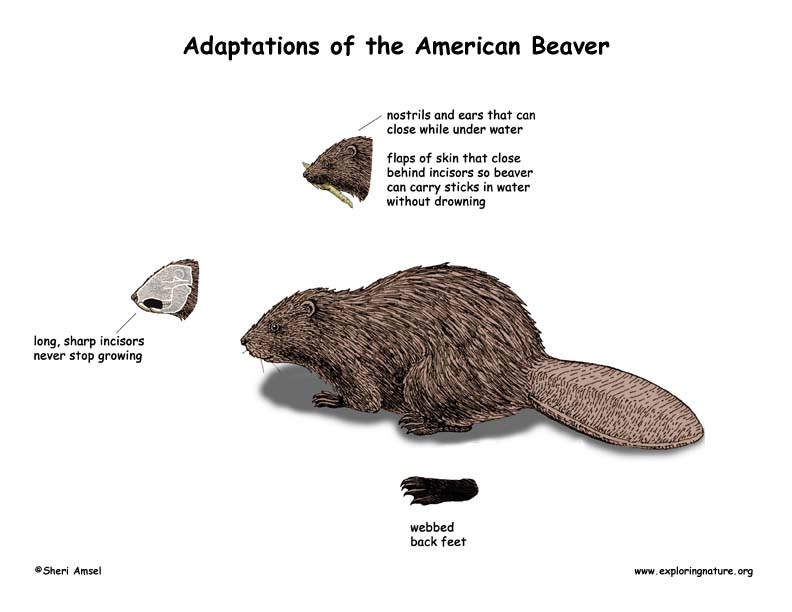

Adaptation in a population of living things happens as a result of an adaptive trait. This is any inheritable trait that increases its survival rate so that it can live longer, reproduce longer, and have more offspring (that also have that trait). Adaptive traits can improve an animal's ability to find food, make a safer home, escape predators, survive cold or heat or lack of water.
The beaver has many interesting adaptive traits. They have long, sharp incisors that never stop growing, so as they wear them down chewing trees, they keep growing back.
They can also close their nostrils and throat while carrying sticks around in the water. This keeps them from drowning while they carry sticks to and fro underwater.
They have a thin membrane over their eyes that allows them to see underwater while protecting their eyes like swim goggles!
They also have a thick coat so that they can swim under the ice in the winter and oil glands to keep their fur well oiled. The beaver had many physical adaptations that helps it survive in its habitat.
For Discussion and Critical Thinking:
The beaver has adaptive traits that helps it survive in its wetland environment
1. Name one of the beaver’s adaptive traits that was so attractive to humans that they almost trapped then into extinction:
2. Name two other of the beaver’s adaptive traits that help them with life in the water:
3. How does one of the beaver’s adaptive traits help it with the food it eats?
4. Do you have any physical traits that help you survive? Discuss one.
When you research information you must cite the reference. Citing for websites is different from citing from books, magazines and periodicals. The style of citing shown here is from the MLA Style Citations (Modern Language Association).
When citing a WEBSITE the general format is as follows.
Author Last Name, First Name(s). "Title: Subtitle of Part of Web Page, if appropriate." Title: Subtitle: Section of Page if appropriate. Sponsoring/Publishing Agency, If Given. Additional significant descriptive information. Date of Electronic Publication or other Date, such as Last Updated. Day Month Year of access < URL >.
Amsel, Sheri. "Adaptations of the Beaver" Exploring Nature Educational Resource ©2005-2024. December 13, 2024
< http://www.exploringnature.org/db/view/Adaptations-of-the-Beaver >

